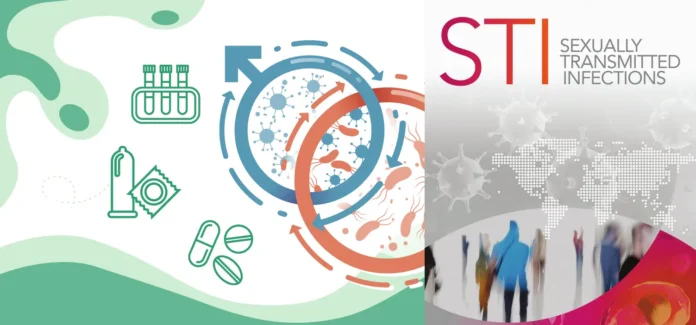Things got a little steamy on your Tinder date, and you threw caution to the wind. Now you’re freaking out because you think you may have a sexually transmitted infection. Take a breath. STIs aren’t a death sentence for your love life. In fact they’re extremely common, and most are easily treated.
That doesn’t mean, however, that you should ignore troubling indicators or wait for symptoms to appear. Outlined below are the six steps you need to take if you think you have an STI. Let’s dive in.
Page Contents
1. Get Tested
First things first: You need to know for sure whether or not you have an STI. Watching for symptoms is important, but many infections show no signs at all. That’s why it’s crucial to get tested, even if your nether regions look and feel normal.
Don’t have time to make it to your local clinic? No worries — at-home STI testing lets you test for infections without needing to miss school or work. Most companies send test kits in discreet packaging, helping you maintain your privacy. You simply provide your sample as instructed by the test kit and send it back to your online care provider.
2. Seek Treatment
So you received your test results and discovered you have an STI. Now what? Bacterial infections like chlamydia and trichomoniasis are easily treated with antibiotics. However, viral infections like herpes and HIV aren’t yet curable. But with the guidance of a doctor, you can manage symptoms with antiviral medications.
If you learn that you have an STI, it’s critical that you follow your treatment plan exactly as prescribed. Once you begin treatment, your symptoms may begin to subside. This doesn’t mean that the infection is gone. Finish your course of antibiotics or other prescribed medications unless told otherwise by your healthcare provider.
3. Inform Your Partner
Just because you tested positive for an STI doesn’t mean your partner has one. However, you still need to let them know your results. Although the conversation may feel uncomfortable, it’s important that you tell them as soon as possible. This gives them the opportunity to get tested and, if they’re positive, to receive treatment before the condition worsens.
Not stoked to reach back out to your one-night stand? Anonymous STI notification tools make it easy to inform someone that they’ve been exposed to an STI without divulging your personal information. In addition, some STIs carry notification mandates. This means your testing provider is legally required to tell your partner that they’ve been exposed to an infection. But don’t freak out — your personal information isn’t included in this conversation.
4. Practice Safe Sex
Folks with a curable condition should put sex on the back burner until finishing treatment.
If you’re in a relationship, wait until both you and your partner have completed antibiotics. This can help prevent reinfection. Once you’ve finished treatment, use condoms or dental dams to prevent further infections. It’s also a good idea to get retested to ensure your prescription did its job.
If you’ve been diagnosed with an incurable infection like herpes, you’re not doomed to a life of abstinence. You can still enjoy a fulfilling sex life, but it’s important that you talk with your doctor about how you can protect future partners. As a rule of thumb, you should always use condoms. Studies show that using condoms correctly for every sexual encounter reduces your partner’s chance of contracting herpes by 30%.
5. Manage Ongoing Symptoms
Unfortunately, you can’t get rid of all STIs with a pill. But learning to manage ongoing symptoms can make your diagnosis feel less scary. If you have herpes, medications like Valtrex can lessen breakouts and reduce the chance of passing the virus on to a partner. Genital warts caused by some strands of human papillomavirus (HPV) are easily frozen off at your doctor’s office.
Depending on your condition, your partner may be able to take medication to help prevent infection. When taken as prescribed, pre-exposure prophylaxis is extremely effective at preventing HIV. It’s also a very good idea to use barrier methods as your first line of defense.
6. Prevent Future STIs
While STIs are common, they’re not inevitable. By taking a few safety precautions, you can get frisky anxiety-free. First and foremost, you should talk with your partner about their sexual health before getting intimate. Even if it’s just a casual hookup, it’s important to ask your partner if they’ve been tested for STIs.
It’s also wise for both men and women to get vaccinated against hepatitis B and HPV. While most strains of HPV go away on their own, some can lead to cervical cancer. Gardasil 9 prevents dangerous strains of HPV when given before individuals become sexually active. Since the vaccine is most effective before exposure, it’s best to receive it in adolescence. However, young men and women may still receive some benefit.
Getting It On Without the Itch
Just like the cold or flu, STIs are easily passed around. While they’re nothing to be ashamed of, they should be treated seriously to safeguard your and your partner’s health. Use the game plan above to effectively treat current — and prevent future — STIs.


